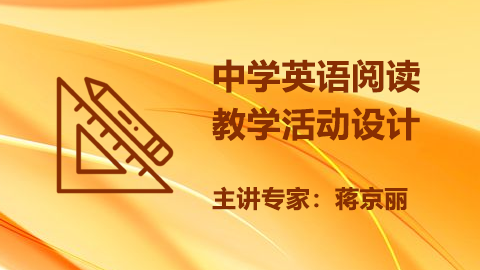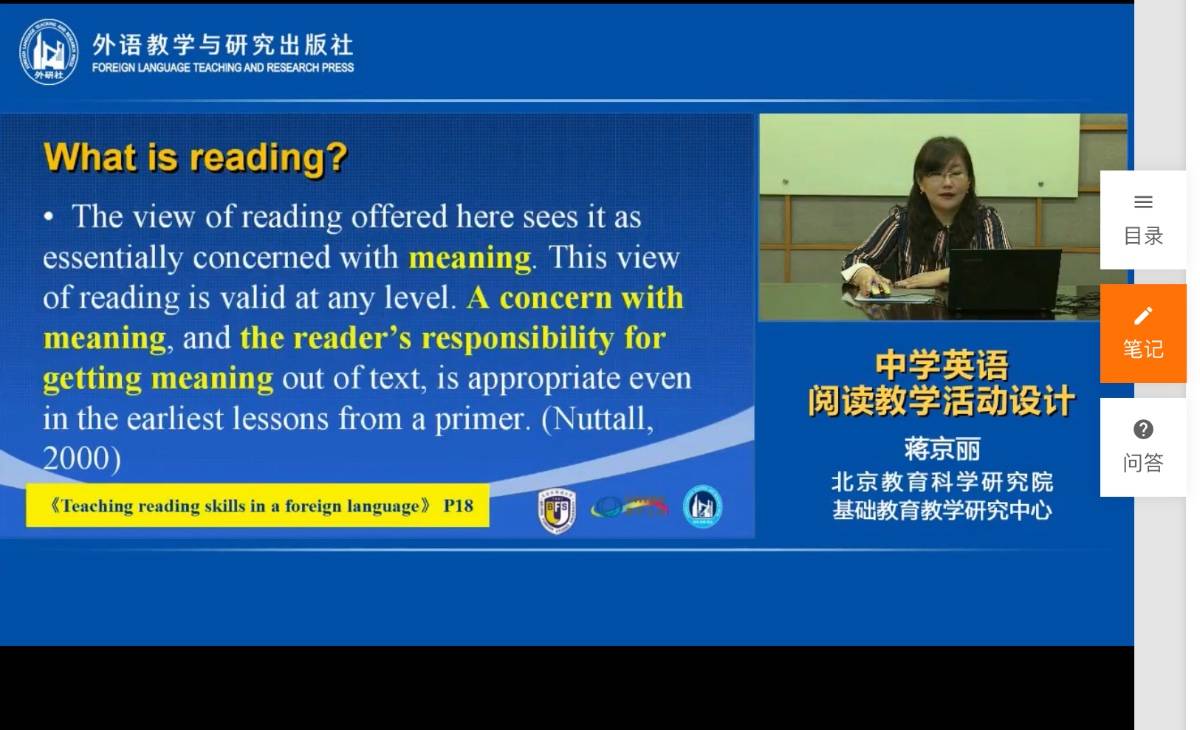① read with purposes
② back knowledge of culture
③ vocabulary + topic + culture
④ what is reading:
A: Thorndike(1917):reading is an active process related to problem solving
B: W idson(1979):阅读不仅是获取信息的过程,而且是解释信息的过程。
c:阅读作为积极的认知过程,强调读者与文本间互相作用的重要性。
D: Goodman(1967)阅读是一个思想与语言之间相互作用的心理语言猜测过程(a psycholinguistic guessing game丿
E: Nuttal(2000)阅读作为一个不断做出假设的动态过程是一个心理语言猜测游戏。(《teaching reading skills in a foreign language>>p 18: the view of reading offered here sees it as essentially concerned with meaning. This view of reading is valid at any level. A concern with meaning and the readers' responsibility for getting meaning out of text, is appropriate even in the earliest lessons from a primer. (Nuttall, 2000丿
F: 《planning a lesson for a reading class 》Pi
Reading is the process of constructing meaning through the dynamic interactionamong the reader's existing knowledge, the information suggested by the written language. And the context. (Anthony, person,&Raphael, 1993. )


 Reading is an active process related to solving problem
Reading is an active process related to solving problem